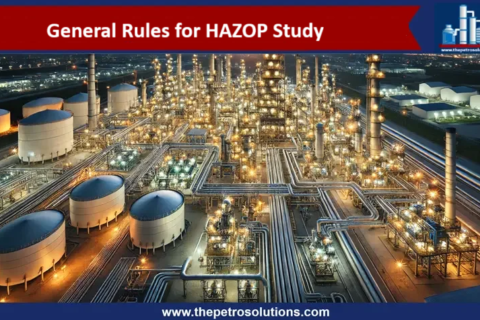Gasoline or petrol is the most common liquid fuel for automobiles and specifications control play a key role in gasoline performance. In an oil refinery, various processes are applied to produce gasoline of the desired quality. With the implementation of stringent environmental regulations, gasoline specifications are in discussion and are being controlled by applying the latest technologies in oil refineries. Gasoline may include various refinery blending streams like straight run, hydrotreated, isomerate, cracked naphtha, catalytic naphtha, Alkylate, reformate, etc. having different properties. In addition, certain additives are also injected into the gasoline pool to improve its quality or meet the quality standards; these should be used within the limits.
The first set of CEN standards by The European Committee for Standardization (CEN) was voluntarily introduced in 1993 for automotive fuels but was observed by all fuel suppliers in Europe. The EN 228 standard covers automotive gasoline fuel quality. The applicable fuel properties include lead and sulfur content for gasoline. The CEN standards are periodically updated to reflect changes in specifications, such as the mandatory reductions in sulfur content. In addition to fuel quality regulation, the 2009 directive introduced a Low Carbon Fuel Standard to reduce greenhouse gas (GHG) emissions for road transport fuels. Some of the euro specifications of gasoline fuel are shown in the table below;

For Euro gasoline, there are several important properties but the three have the greatest impact on engine performance. These are antiknock characteristics, Reid vapour pressure, and boiling range. In addition, Sulfur, Benzene, Aromatics, Lead, and Manganese are also very critical. In a Petroleum Oil Refinery, these parameters are critically monitored and controlled to produce the gasoline fuel of the desired quality. Specifications of Euro-5 gasoline are given in the table below;

1. Research Octane Number (RON) and Motor Octane Number (MON)
Octane number is the most important specification of motor gasoline and it delivers smooth burning in the engine without knocking. RON is the measurement of the anti-knocking resistance of gasoline fuel. It is measured by comparing the antiknock qualities of fuel with a mixture of iso-octane (octane number 100) and n-heptane (octane number 0). A gasoline with an octane number of 90 means the engine performance is equivalent to a mixture of 90 vol% of iso-octane and 10% n-heptane.
The motor octane number (MON) indicates engine performance at high-way in severe conditions with high speeds (900 rpm). On the other hand, the research octane number is indicative of low-speed city driving (600 rpm). Further, about the octane rating visit my previous blog about octane rating.
2. Reid Vapour Pressure (RVP)
It is defined as the absolute vapour pressure exerted by the vapours of the gasoline at 37.8 °C in a volume of air 4 times the volume of liquid. It is the measure of volatility, vapour lock tendency, and explosion hazards of motor gasoline fuel. Sufficient vapour pressure of gasoline is required to start ignition in an internal combustion engine. ASTM D-323 is the standard method used to measure the RVP in the laboratory. It is important to measure RVP to avoid high levels of vaporization so that products are not lost to the atmosphere or the pumps are vapour-locked. Moreover, in winter low vapor pressure may cause difficulty in starting the engine. Therefore, oil refineries control the RVP seasonally to maintain gasoline engine reliability.
3. Sulfur Content
Ultra-low sulfur (<10 ppm, sulfur) is being maintained in gasoline in most parts of the world due to the strong negative environmental impacts of sulfur. To control the sulfur in the naphtha, the hydrotreating process is applied. The performance of the hydrotreating catalyst plays a vital role in controlling the sulfur content. Temperature increase across the reactor is the key parameter to be applied for reducing sulfur in the product.
4. Manganese Contents
Manganese in fuel leaves irreversible effects on vehicles as, after oxidation, it coats the entire surface within the engine and exhaust system including spark plugs and pores of catalyst in the catalytic converter, resulting in high emissions and lower fuel economy. Practically no content of manganese is present in any of the blending components, so the only source of Manganese is the addition of MMT (Methylcyclopentadienyl Manganese Tricarbonyl). So its addition should be restricted within the controllable limit.
5. Aromatics
Aromatics are limited to a maximum of 35 volume % in gasoline in Euro-V. The significance of curtailing is to reduce the adverse effects of Benzene, Toluene, Ethyl Benzene, and Xylenes (BTEX) on human health as they are carcinogenic and are more volatile, and can be easily transmitted to humans through the breath. People who are more prone to the adverse effects of BTEX are mostly those working at fuel pumping stations, living near highways, dealing with production, and handling the operations of gasoline.
6. Benzene
Benzene has an octane number of more than 100. However, its concentration is strictly controlled to less than 1% because of its adverse health effects. Benzene is a human carcinogen. It is also present in vehicle exhaust if it is present in the fuel. Naphtha Reforming Unit, reformate contains a high concentration of Aromatics and Benzene. The isomerization process reduces the benzene and aromatics to the minimum level, so the gasoline blend contains the required amount of Benzene.
7. Copper Corrosion
A copper corrosion test is performed to measure the corrosive properties of petroleum products. ASTM D130 is a standard method used to measure copper corrosion. In gasoline, several harmful corrosive substances, like acidic or sulfur compounds, are present which may corrode the engine and other storage facilities. In the test, a copper strip is inserted into the sample for a specific time, and then the strip colour is compared with ASTM standard colours ranging from 1~4.
8. Oxidation stability
It is the time within which gasoline remains stable before it forms gums or peroxides. This is an indication of the tendency of gasoline to form gum in storage conditions. Unsaturated hydrocarbon components like di-olefins in gasoline form gums or layers when coming in contact with oxygen. D525 is a standard ASTM method used to measure the oxidation stability of gasoline. Gasoline from thermally or catalytic cracking units contains more unsaturated components causing poor oxidation stability. Oxidation stability can be improved by adding additives like metal deactivators or oxidation inhibitors or by blending the cracked naphtha with straight-run naphtha.
Top References
- EN228 (European Standard for Unleaded Gasoline)
- Handbook of Petroleum Product Analysis by James G. Speight
- Hydroprocessing for clean energy by Frank (Xin X.) ZHU, Richard Hoehn, Vasant Thakkar and Edwin Yuh
For further information, discussion and queries please comment in the box below or contact us at admin@, Contact at Whatsapp: 00923334647564 or follow us on Facebook & LinkedIn
Certified Functional Safety Professional (FSP, TÜV SÜD), Certified HAZOP & PHA Leader, LOPA Practitioner, and Specialist in SIL Verification & Functional Safety Lifecycle, with 18 years of professional experience in Plant Operations and Process Safety across Petroleum Refining and Fertilizer Complexes.
- Nasir Hussainhttps://thepetrosolutions.com/author/admin/
- Nasir Hussainhttps://thepetrosolutions.com/author/admin/
- Nasir Hussainhttps://thepetrosolutions.com/author/admin/
- Nasir Hussainhttps://thepetrosolutions.com/author/admin/







8 thoughts on “Euro Specifications of Gasoline fuel”
Well I sincerely enjoyed reading it. This post offered by you is very helpful. Bobbye Sanson Earl